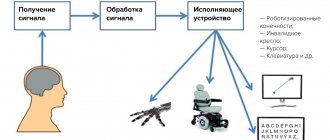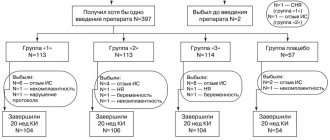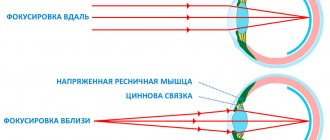Transcranial electrical stimulation or TES therapy refers to a technique for the therapeutic transcranial effect of pulsed currents on the human brain. This method was developed taking into account all the fundamentals of evidence-based classical medicine, so it is quite widely used and recognized.
TES therapy is based on the fact that special electrodes are attached to the patient’s head, through which a weak current is supplied. With this effect, electric current can have a protective effect on all functions of the brain and change its bioelectrical activity.
Indications
Non-invasive transcranial (translated from Latin as “through the skull”) electrical stimulation is one of the few methods of physical therapy with scientifically proven effectiveness. The impact of pulsed current has analgesic, immunostimulating effects, activates regeneration processes, and regulates vascular tone. Indications for sessions are:
- pain syndrome due to neurological pathologies, cancer, extensive burn lesions, as well as phantom pain;
- depression, neurosis, anxiety;
- trophic ulcers, deep burns;
- arterial hypertension;
- chronic infectious diseases;
- low immune status;
- toxicosis during pregnancy;
- dermatological pathologies (neurodermatitis, atopic dermatitis, eczema);
- neurotic conditions against the background of menopause;
- sensorineural hearing loss;
- pathologies of the endocrine system;
- allergy;
- inflammatory diseases of autoimmune etiology (rheumatoid arthritis, psoriatic arthritis);
- alcohol or drug addiction;
- Parkinson's disease;
- insomnia.
Stimulation of the production of one's own endorphins helps relieve even severe pain; their effect is approximately 20 times stronger than the effect of morphine. For deep skin lesions, electrical stimulation activates reparative regeneration and helps slow tumor growth.
Contraindications to magnetic stimulation:
- If a pacemaker is installed
- If you have a spinal cord or bladder stimulator installed.
- If you have had brain surgery or severe brain damage (only peripheral stimulation is possible).
- Do not apply to the carotid sinuses.
- Stimulation of pregnant women should be avoided.
- Cerebral vascular disorders (patients after stroke, only peripheral stimulation is possible).
- Stimulation should not be used in the area of the heart if the patient has problems with it.
First Neurology is one Clinic in the Samara region where transcranial magnetic stimulation is performed.
Residents of Samara, Kazakhstan can receive TCM treatment at the address: Samara st. 5 clearing 95A; st. Buyanova 12 Clinic First Neurology, tel. registry 8 .
Carrying out the procedure
A transcranial electrical stimulation session lasts about 30 minutes. The patient is placed in a sitting or lying position. Electrodes are attached to the scalp, to which a low-power pulsed current is supplied from the device. A specific arrangement of electrodes is used, taking into account the direction of current application (from the forehead to the mastoid processes) and the resonant parameters of the current. The procedure is completely painless; the patient may feel slight vibration, warmth, and tingling in the area of treatment.
During the session, the doctor controls the person’s sensations in order to regulate the strength of the current supplied. As a rule, during the first procedure the current strength is not changed. In subsequent sessions, the specialist may slightly increase the impact to achieve a more pronounced effect. The required number of procedures is about 10, determined individually for each patient.
The skin under the electrodes does not suffer and looks exactly the same as before the session. No complications or negative consequences of the procedure were identified.
Neurostimulation
Today, doctors define neuromodulation as a method of direct medicinal or electrical influence on the human central nervous system, which leads to the normalization of the nervous system and the elimination of motor and sensory disorders, as well as the elimination of pain.
To do this, the patient is implanted with a small special device (minicomputer) which provides a neuromodulatory effect. If an electric current is applied to the nervous system, then they talk about neurostimulation, and the device is called a neurostimulator. If they are influenced by drugs, then they talk about dosed administration of drugs, and the device is called a pump.
The history of neuromodulation began many years ago when people noticed that electrical current helped relieve pain. It is known that more than 9 thousand years ago people wore bracelets and beads made of amber and various magnets to get rid of headaches and reduce gout pain. While live rocks were popular, electric fish such as the electric stingray and the freshwater electric catfish were even more popular among the ancient Greeks and Egyptians. Their images are found even on ancient Egyptian tombs.
Stingrays were well known to fishermen along the Mediterranean coast. By the numbing “blows” they immediately recognized that a stingray had fallen into their net. It was then observed that stingray “bumps” produced pain relief. The earliest written mention of electroanalgesia that has reached our times dates back to 46 AD. In the writings of a Roman physician named Scribonus Largus there is the following description: “For any type of gout, take a live stingray and place it under the feet during the next attack. The patient must stand on the wet sand on the shore washed by the sea and stand there until his legs go numb to the knees. The procedure will relieve pain or prevent pain from occurring if an attack has not yet begun. In this way Anterus, a freed slave from Tiber, was cured."
The use of electric stingrays in medicine continued into the Middle Ages. In the 16th century, stingrays were used to treat patients suffering from migraines, melancholy, and epilepsy. The sedative effect of electrotherapy was mentioned by Avicenna. He described the treatment of patients with melancholy and migraine with the help of stingrays, which should be placed on the forehead.
At the beginning of the 17th century, William Gilbert (1544-1603), a scientist at the court of Queen Elizabeth, described many electrical and magnetic phenomena in his work “De Magnete” and introduced the words “electricity” and “electric force” into the lexicon. Gilbert went down in history as the “father of electricity.” After this, in 1672, Otto van Guericke designed an electrostatic generator - the first device to produce electricity.
During the 18th century, doctors used various engineered sources of electrical current. Interest in electroanalgesia has been increasing. Stingrays are out of fashion. Otto van Guericke The most important contribution was made by John Wesley (1703-1791), the founder of Methodism. He wanted to make electroanalgesia accessible to ordinary people. In his book “De Desidera um” he describes the advantages of using electricity and recommends it for the treatment of many diseases.
The book was very popular. Wesley believed so much in the therapeutic effect of electricity that he himself brought four machines generating current to a London hospital so that poor citizens could feel relief from various diseases.
Then Benjamin Franklin (1706-1790) developed the theory of electricity and introduced the now generally accepted symbols “+” and “-”. He was skeptical of the overly ambitious goals of electrotherapists. However, his contribution to the development of the theory of electricity, the explanation of the balance of charges in nature, brought electricity from the environment of philosophical reasoning to the field of scientific study. He opened the way for serious research into the influence of electricity on a living organism and on the course of diseases.
The second half of the 18th century turned out to be the era of charlatans, including electrical charlatanism. In England, James Graham lectured on the "Heavenly Bed" and electrical instruments that supposedly increased the chance of pregnancy in infertile women. The "Heavenly Bed" was rented out for £50 a night as John Wesley's special remedy for impotence and infertility.
In pre-revolutionary France, Franz Mesmer was popular, he created mesmerism - the anti-scientific doctrine of “animal magnetism”. Mesmerism was popular among the nobility, and Mesmer made a lot of money.
The 19th century is the era of rational positivism, faith in man, in the higher power of humanism; Medicine became a science based on the laws of physics and chemistry. New attempts to use electricity to relieve pain began to appear, despite the fact that the method was heavily compromised by charlatans.
At the beginning of the 19th century, galvanization became widespread; electricity for the procedure was generated by friction or a chemical reaction. The person who perhaps made the greatest contribution to the development of electroanalgesia is the French neurologist Guillaume Duchenne (1806-1875), one of the founders of electrodiagnostics and electrotherapy. He suggested placing electrodes on moistened skin to reduce pain as current passes through the body, and also recommended points on which to place the electrodes. Galvanization is also used in modern medicine - it represents the impact on the body of a constant continuous current of low strength (up to 50 mA) and low voltage (30-80V) through electrodes applied to the body in contact. The introduction of a drug into the human body using galvanization is called electrophoresis. Galvanization is used to treat injuries and some diseases of the peripheral nervous system (plexitis, radiculitis, neuralgia).
At the beginning of the 20th century, the “golden age” of electroanalgesia ended. The pharmaceutical industry developed, and X-ray diagnostics appeared. In the second half of the 20th century, neurophysiological research by Collins, Sweet, Shealy, and Noordenbosch paved the way for the discovery of the Gate Control Theory of pain by Melzack and Wall in 1965.
This theory explains how painful “nociceptive” signals are transmitted to the spinal cord, and from there to the brain, and how they are normally blocked by signals from other sensory fibers (the “gate” closes), providing analgesia.
In practice, you can understand how “gate control” of pain works using a simple example: If a person touches a table with his hand, he will not feel any pain - since tactile signals completely block pain signals, and the brain receives information only about sensations. If a person hits his hand on the table, then strong pain signals will open the “gate”, pass to the spinal cord, and from there to the brain, the person will feel pain. However, if the poor fellow rubs the bruised area, the enhanced tactile signals will close the “gate” and the pain will decrease or go away completely.
The first implantation of surgical electrodes into the spinal cord was performed by Professor Shealy in 1967 to affect the “gate” and reduce pain in 2 patients. Medtronic began producing electrodes in 1971.
In 1981, Medtronic released the first fully implantable neurostimulator for the relief of chronic pain.
Also, since the 1960s, neurologists and neurosurgeons have used electrical nerve stimulation to study and locate various structures in the brain. This study discovered that stimulating certain areas of the brain suppressed symptoms of neurological disorders such as essential tremor and Parkinson's disease.
For more than 30 years, Medtronic has been a research pioneer and leader in the development of neurostimulation systems for the treatment of chronic pain. Technological innovation culminates in the creation of a therapy that relieves patients' pain and suffering through a precisely timed electrical impulse delivered by a fully implantable programmable neurostimulator.
A modern neurostimulator consists of a battery and a microchip, which allows programming of the neurostimulator non-invasively, from the outside.
Equipment used
To conduct sessions, special equipment is used that generates pulsed currents. The devices are designed taking into account safety and ergonomic standards.
Currently, the most widely used devices for transcranial electrical stimulation are:
- Etrans-1, Etrans-2, Etrans-3;
- Transair (modifications 02, 01В, 01С, 01П);
- MDM-1, MDM-101.
Various devices have been developed, both stationary and portable. Some models are intended for professional use in medical institutions. There are also devices for carrying out procedures at home.
Our specialists
Zhuravleva Nadezhda Vladimirovna
Head of the center for diagnosis and treatment of myasthenia gravis.
The doctor is a neurologist of the highest category. Physiotherapist. Experience: 16 years.
Derevianko Leonid Sergeevich
Head of the Center for Diagnostics and Treatment of Sleep Disorders.
The doctor is a neurologist of the highest category. Vertebrologist. Somnologist. Epileptologist. Botulinum therapist. Physiotherapist. Experience: 23 years.
Drozdova Lyubov Vladimirovna
The doctor is a neurologist. Vertebroneurologist. Ozone therapist. Physiotherapist. Experience: 17 years.
Bezgina Elena Vladimirovna
The doctor is a neurologist of the highest category. Botulinum therapist. Physiotherapist. Experience: 24 years.
Palagin Maxim Anatolievich
The doctor is a neurologist. Somnologist. Epileptologist. Botulinum therapist. Physiotherapist. Experience: 6 years.
Temina Lyudmila Borisovna
Pediatric neurologist of the highest category. Candidate of Medical Sciences.
Experience: 46 years.
Romanova Tatyana Alexandrovna
Pediatric neurologist. Experience: 24 years.
Mizonov Sergey Vladimirovich
The doctor is a neurologist. Chiropractor. Osteopath. Physiotherapist. Experience: 8 years.
Effect of transcranial electrical stimulation
During clinical studies, the following effects of this method of physical influence were confirmed:
- pronounced analgesic effect even in those patients whose pain syndrome is not relieved by medication;
- antidepressant effect, normalization of psychophysiological processes, improvement of performance, elimination of chronic fatigue syndrome;
- improved sleep;
- activation of regeneration of all types of tissues;
- stimulation of the immune system, increasing the body's resistance;
- normalization of vascular tone and, as a result, blood pressure;
- improvement of well-being, reduction of pain intensity and inhibition of the development of tumor processes in cancer;
- relieving symptoms of acute withdrawal in patients with alcohol and drug addiction, reducing cravings for alcohol and drugs, eliminating disorders that arise during the period after abstinence;
- reduction in the intensity and frequency of allergic reactions; after sessions, you can reduce the dosage of antiallergic drugs;
- relief of inflammation in infectious and autoimmune diseases.
Transcranial electrical stimulation can effectively treat many pathologies and improve results from the use of medications while reducing the dosage.
You can undergo treatment with transcranial electrical stimulation in Moscow in most clinics. You can sign up for the procedure at the selected institution by phone. The price of one session ranges from 500 to 2500 rubles, depending on the level of the institution and the type of equipment used.
Tolerability and harmlessness of magnetic stimulation
TMS has long been used in neurology. This intensity does not cause pathological reactions. TMS is safe for heart function and does not increase the risk of epileptic seizures at a frequency of 1 Hz.
No preparation is required for the TMS procedure . The treatment is very convenient because there is no need to remove clothes, the patient can lie or sit in a comfortable position. It is recommended to remove metal objects (belts), put away your phone and bank cards in order to avoid magnetization.










